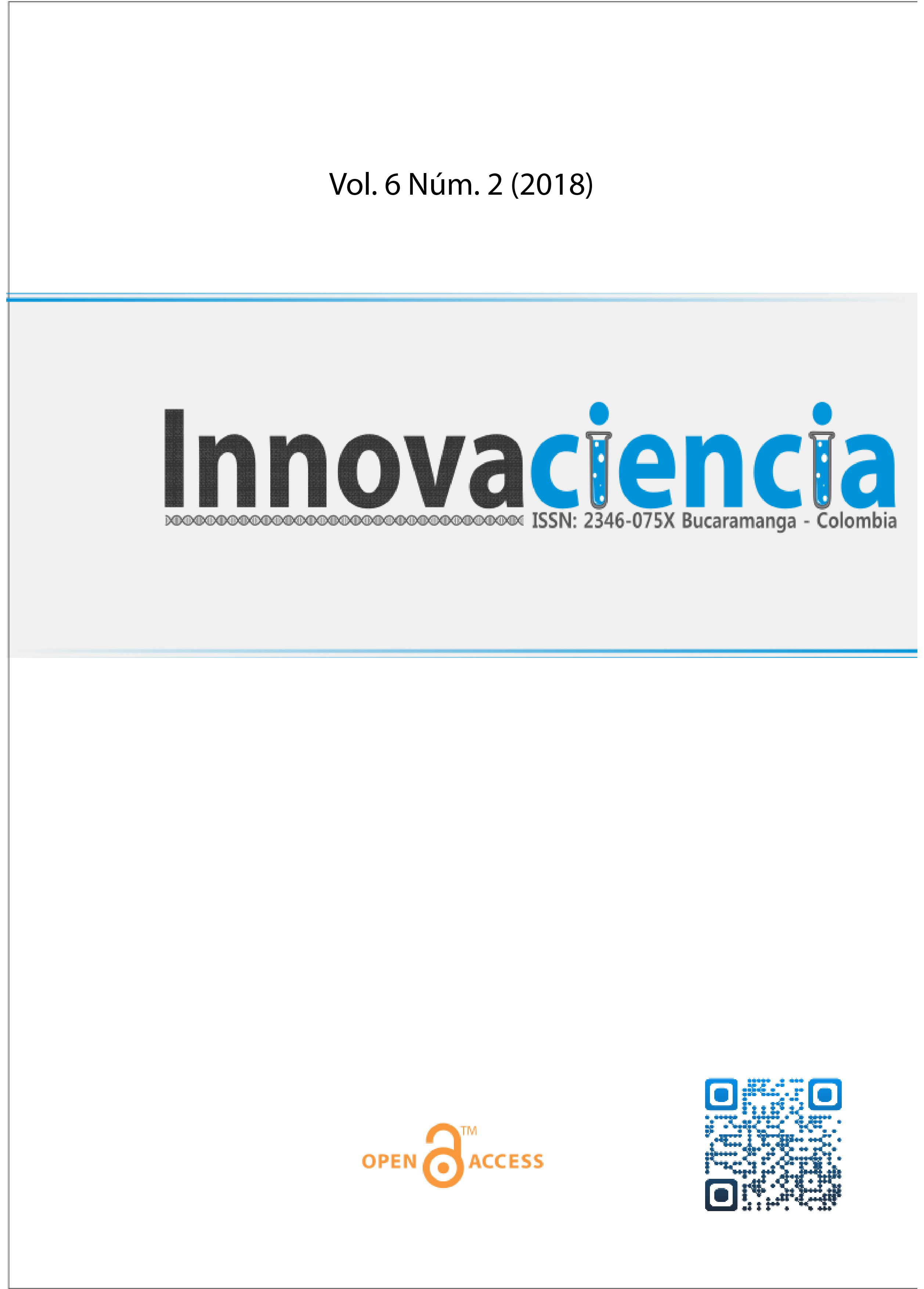Uso de caracteres mofologicos y anatomicos para delimiter variadades de Paliurus spina-christi Mill. (Rhamnaceae)
DOI:
https://doi.org/10.15649/2346075X.471Palabras clave:
Paliurus spina-chriti L. var. spina-chriti, Paliurus spina-christi var. macrocarpa Beck., Isobilateral mesophyll, leaf anatomy, Petiole anatomy, Cuticular structure.Resumen
Introduction: Paliurus spina-christi Mill is a species with two varieties namely Paliurus spina-christi L. var. spina-christi and Paliurus spina-christi
var. macrocarpa Beck native to mountains of Kurdistan, rarely growing in the upper plains of northern Iraq. Materials and Methods: A total of 15 plants from different parts of Kurdistan region were sampled. 30measurements for each characters of Leaf, Inflorescence, Flowers, Fruit, seeds, and leaf anatomical characters were measured for comparison between the two varieties. Results and Discussion: Fruit diameter of var. macrocarpa is significantly larger than fruit diameter of var. spina-christi. Most mean flower parts especially the ovary, in addition to seed size is larger in var. macrocarpa. Upper epidermal layer is always thicker than the lower epidermal layer for the same blade. The isobilateral mesophyll includes 2 layers of long palisade cells adaxially and 2-3 layers of short cells abaxially. Many vascular bundles are seen equally spaced in the mesophyll tissue.With the exception of the presence of simple hairs on the petiole adaxial side of the var. spina-cristi and the absence of these hairs from the same site of var. macrocarpa, all other anatomical features are considered to be of no taxonomic application. Stomatal density of the adaxial leaf side is up to 19 stomata per mm² in var. spina-christi while it is up to 38 stomata per mm² in var. macrocarpa. Conclusions: Both fruit diameter and the stomatal density of the adaxial leaf side constitute diagnostic characters for separating between the two varieties of Paliurus spina-christi Mill
Referencias
Townsend C C, and Guest E (Eds.). Flora of Iraq. Ministry of Agriculture and Agrarian Reform, Baghdad-Iraq. 1980, Vol.4.
Xiangchuan L I, Wang H., Leng Q., Xiao L., Guo J., Wenlong H E. Paliurus (Paliureae, Rhamnaceae) from, the Miocene of East China and its Macrofossil-based Phylogenetic and Phytogeographical History. Acta Geologica Sinica (English Edition) 2014; 88, (5): 1364-1377. https://doi.org/10.1111/1755-6724.12304
Chen Yi-ling and Chou Pan-kai. Rhamnaceae. In: Chen Yi-ling, ed., Fl. Reipubl. Popularis Sin. 1982; 48(1): i-vi, 1-169.
Basinger J, and Dilcher D. Ancient bisexual flowers. Science 1984; 224: 511-513. https://doi.org/10.1126/science.224.4648.511
Manchester S R. (1999). Biogeographical relationships of North American Tertiary floras. Ann Mo Bot Gard 1999; 86:472-522. https://doi.org/10.2307/2666183
Merev N, Gerçek Z, and Serdar B. Wood anatomy of some Turkish plants with special reference to perforated ray cells. Turkish Journal of Botany 2005; 29: 269-281.
Zarinkamar F. Comparative foliar anatomy of five xerophyte species from Iran. Iranian Journal of Botany 1993; 6: 153-168.
Dinarvand M, and Zarinkamar F. Anatomy-taxonomy of the genus Ziziphus in Iran. Iranian Journal of Botany 2006; 12: 36-41.
Raeder-Roitzsch J E. Forest trees in Iraq. Bab. Fac. of Agriculture, University of Mosul, Iraq, 1969.
Holmgren K P, and Keuken W. Intermountain Flora: Vascular plants of the intermountain west, U.S.A. 1989; 3B: 1-279. New York Botanical Garden, Bronx, New York.
Fathoulaah Ch N. Biological and Anatomical study of different Cuscta species. Msc. Thesis, Salahaddin Univ., Coll. Of Sci.: P: 19. featuers. Ann. Misouri Bot. Garden 2005; 73: 228-275.
Saeed, J. F. Systematic study of the genus Campanula L. (Campanulaceae) in Iraq Ph.D. Thesis, Educ. Coll. Salahaddin Univ. Erbil. 2003, (In Arabic).
Liu Z, Carpenter S B, Bourgeois W J, Yu Y, Constantin R J, Falcon M J, and Adams J C. Variation in the secondary metabolite camptothecin in relation to tissue age and season in Camptotheca acuminata (Nyssaceae). Tree Physiol, 1998; 18: 265-270. https://doi.org/10.1093/treephys/18.4.265
Descargas
Publicado
Cómo citar
Descargas
Número
Sección
Licencia
Todos los artículos publicados en esta revista científica están protegidos por los derechos de autor. Los autores retienen los derechos de autor y conceden a la revista el derecho de primera publicación con el trabajo simultáneamente licenciado bajo una Licencia Creative Commons Atribución-NoComercial 4.0 Internacional (CC BY-NC 4.0) que permite compartir el trabajo con reconocimiento de autoría y sin fines comerciales.
Los lectores pueden copiar y distribuir el material de este número de la revista para fines no comerciales en cualquier medio, siempre que se cite el trabajo original y se den crédito a los autores y a la revista.
Cualquier uso comercial del material de esta revista está estrictamente prohibido sin el permiso por escrito del titular de los derechos de autor.
Para obtener más información sobre los derechos de autor de la revista y las políticas de acceso abierto, por favor visite nuestro sitio web.
















